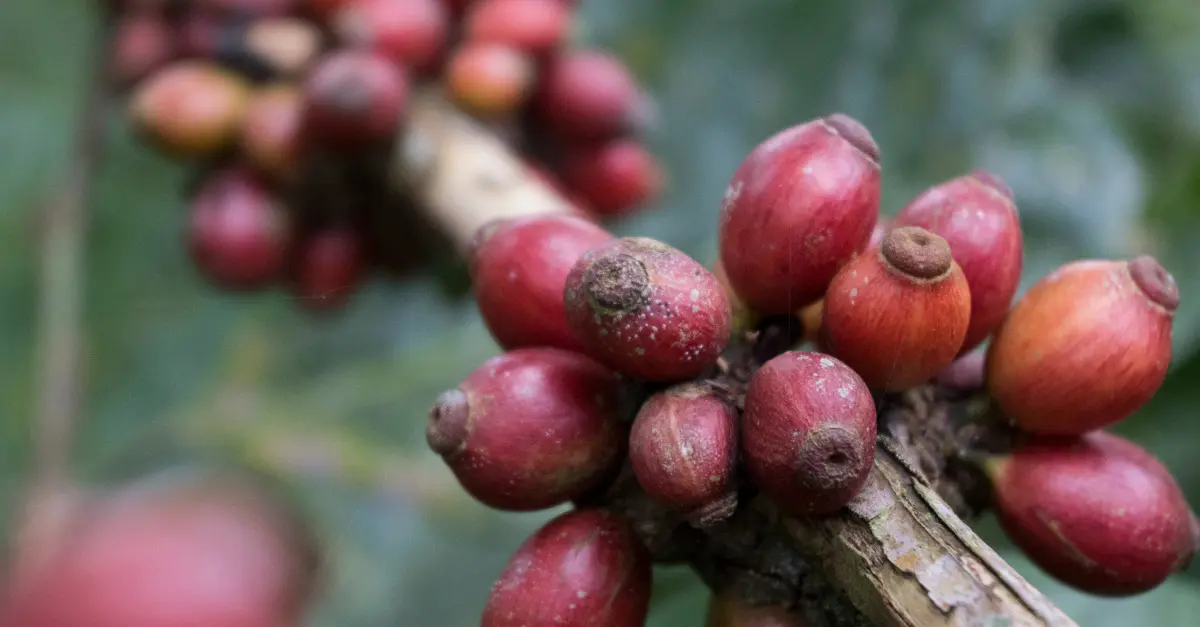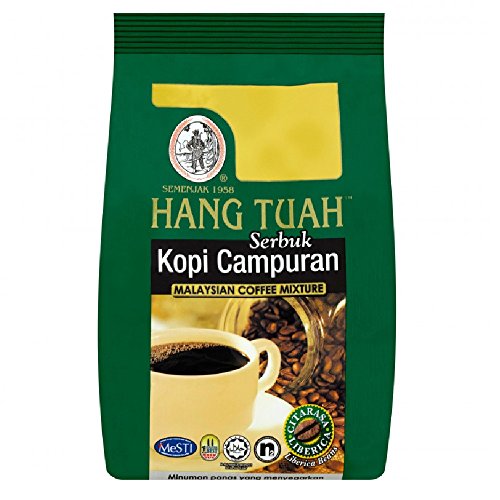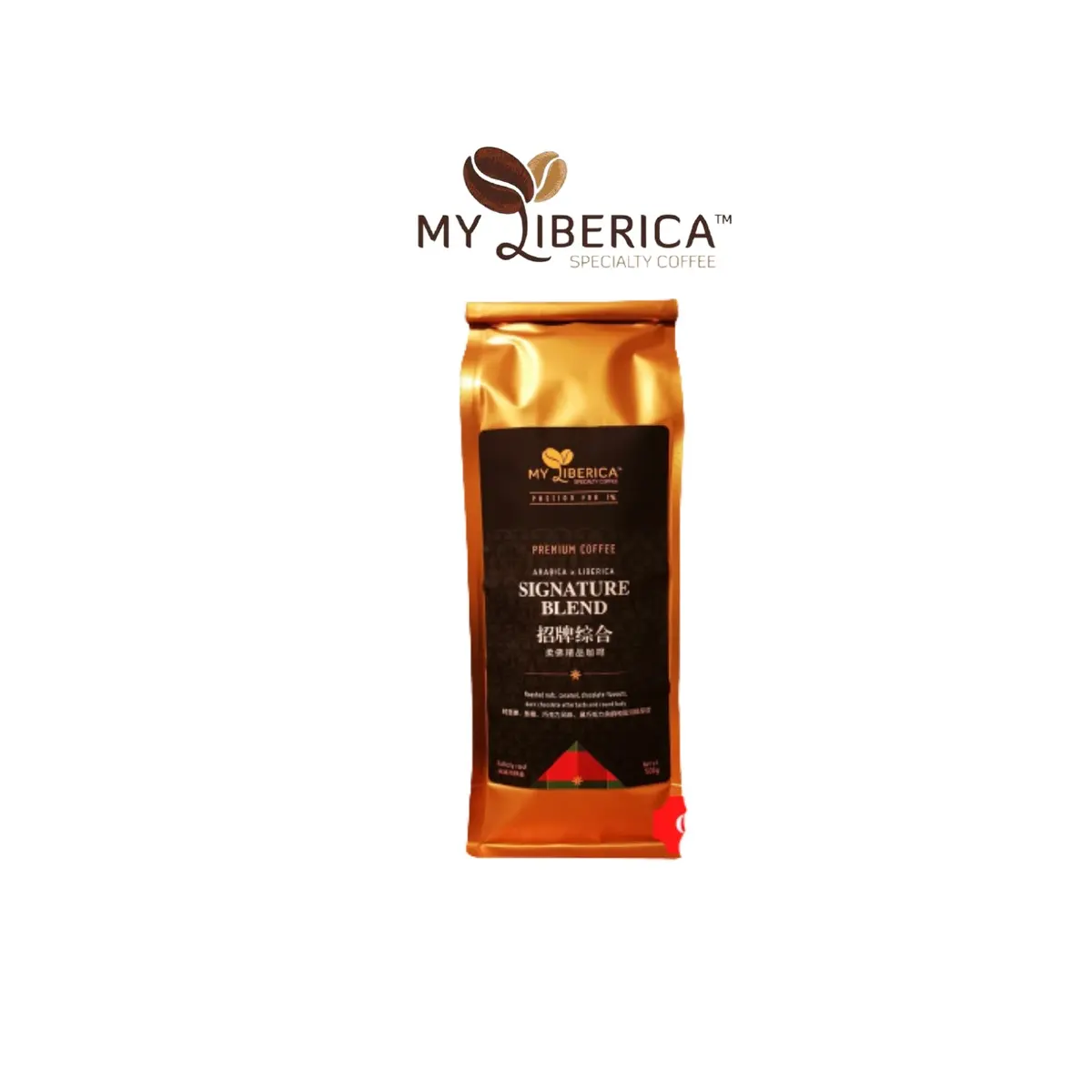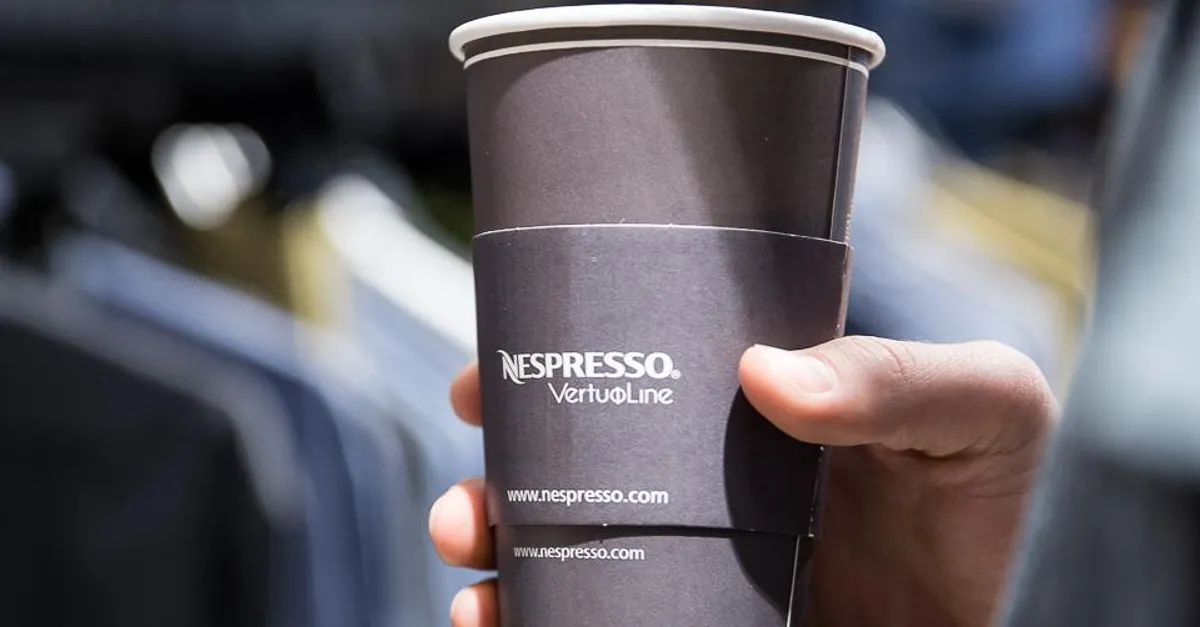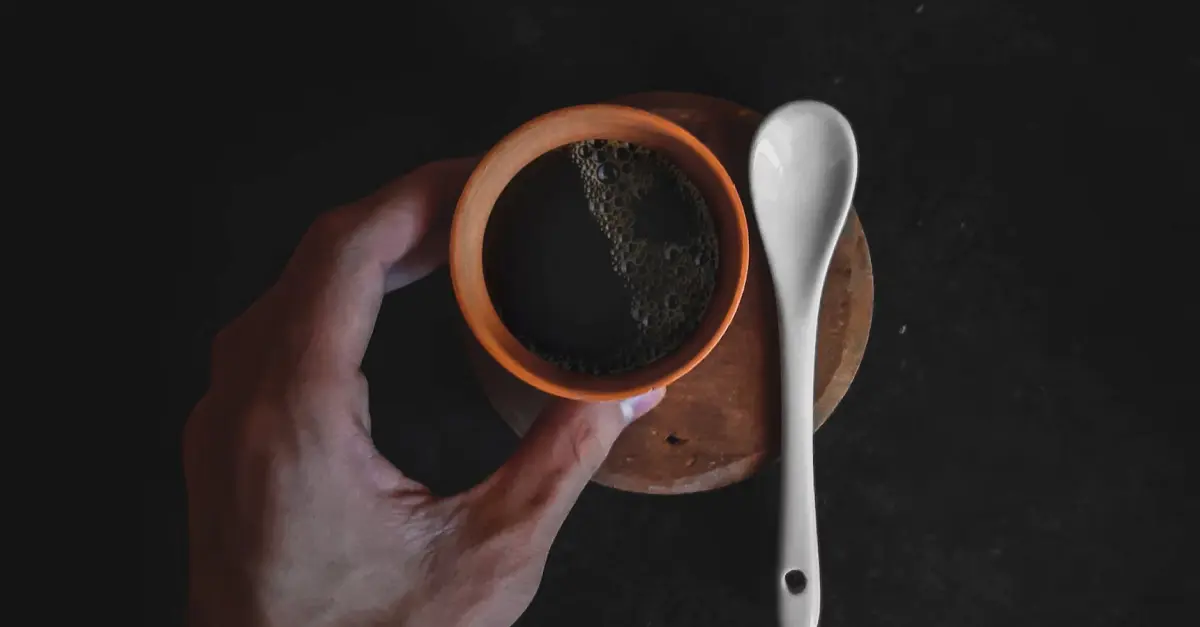Unbeknownst to many coffee drinkers, liberica coffee joins the list of coffee varieties available on the market, apart from Arabica and robusta. This lesser-known variety comes with unique properties that vastly differ from the more common Arabica or Robusta beans.
Whether it’s the bean shape, flavor, or aroma profile, liberica coffee has its own distinctive characteristics that make it worth exploring. So, if you are a coffee lover, your next endeavor should be to experience Liberica coffee. Here’s a brief overview of this interesting lesser-known variety.
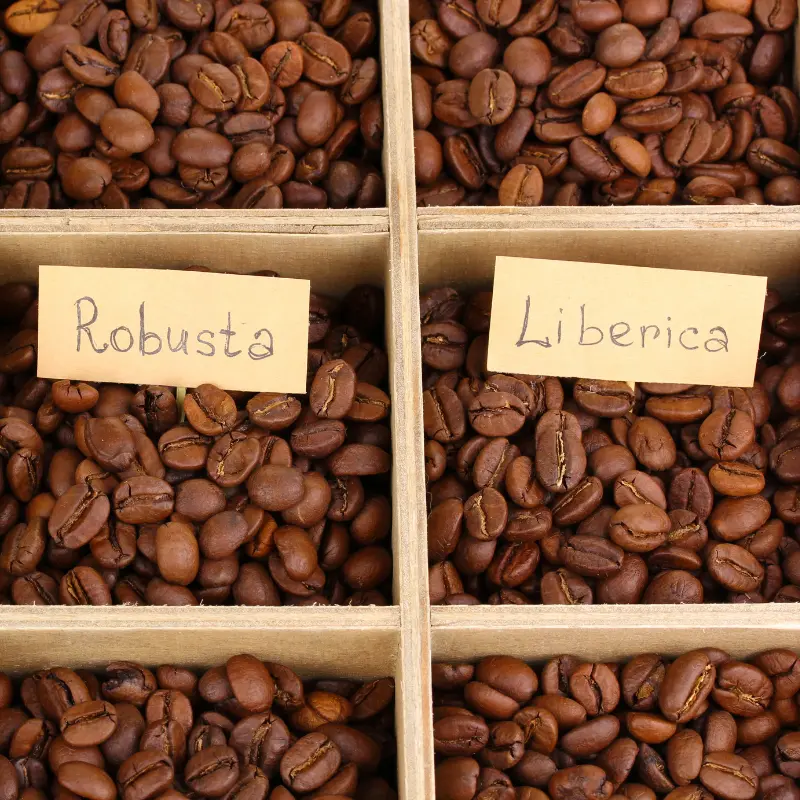
Why is Liberica Coffee Less Popular Globally?
Liberica coffee enjoys a low global coffee market share because it is less commonly grown than Arabica and robusta beans. While Arabica beans account for 70% of the global market share, robusta beans account for about 30% to 40%. The reason why liberica coffee is less commonly grown than the latter is due to its comparatively lower yield.
So, while liberica coffee trees and cherries are the biggest among commercially grown coffee varieties, their low yield removes their attractiveness as a commercial crop. The rare nature of liberica coffee beans also makes them more expensive than Arabica or robusta beans.
Why is Liberica Coffee Special?
Unlike the main varieties, Arabica and robusta coffee, liberica thrives in warm and humid conditions. In fact, excelsa, one of the main liberica coffee cultivars, is drought tolerant. However, liberica coffee also requires low elevations, between 2,950 and 4,300 feet. For an abundant harvest, the trees need to grow under light shade on well-drained clay or sandy soils. But, they also grow in relatively full sunlight in some Asian regions, like Malaysia.
The Liberica Coffee Cherry
The unique growing conditions of liberica coffee are among the factors that account for the coffee’s unique shape and exceptional flavor and aroma. The liberica coffee cherry features a bigger asymmetric or almond shape with an extended tip. The cherry typically features a long oval shape with a hooked tip, jagged central furrow, and asymmetrical sides. It also grows to twice the sizes of the more common coffee bean varieties when ripe.
Part of the reason why liberica develops a unique floral and fruity flavor with some smokiness is how the cherry develops. Liberica coffee cherry comes with a 60:40 pulp-to-parchment ratio. On the other hand, Arabica and robusta beans develop a 40:60 pulp-to-parchment ratio. This means that liberica coffee cherries take more time to dry. But, during this prolonged period, the more concentrated pulp ferments, creating the signature fruity and floral flavor profile.
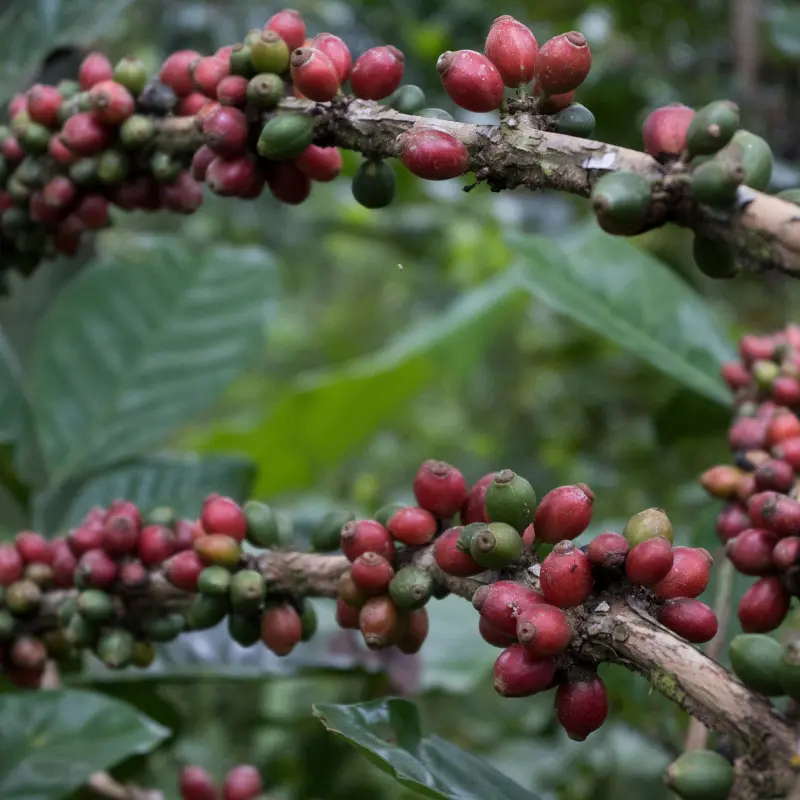
Sugar and Caffeine Content
The high sugar content also plays a role in affecting flavor. Compared to other varieties, liberica coffee has a relatively higher sugar content, of up to 30%. Arabica and robusta coffee beans only boast about 6-9% and 3-7%, respectively. But, it has a relatively lower caffeine content at just 1.23g per 100g compared to the 1.61g/100g of Arabica coffee beans and 2.26g/100g of robusta beans.
Flavor and Aroma
As mentioned earlier, liberica coffee beans boast a fruity and floral aroma with full and slightly smoky undertones. When roasted, they unleash a smoky and nutty profile with hints of chocolates, spice, and ripe berries.
But, it is also important to remember that the land and variations in the environment affect flavor, too. So, while maintaining fruity, floral, and smoky characteristics, liberica coffee from different regions achieves different flavors as well. For instance, some regions produce a more prominent jackfruit profile while others produce stone fruit or citrus flavors.
Similarly, the processing impacts the flavor of liberica coffee. For instance, naturally processed liberica beans grown in southeast Asia boast delicate jackfruit flavors. On the other hand, washed liberica beans boast a citrus flavor with floral or chocolate notes.
Either way, liberica beans maintain a sweeter flavor. But, when improperly grown, liberica develops an unpleasant flavor profile, explaining why some consumers may not be fans. Low quality liberica coffee develops an intense smoky and woody profile which overpowers its sweeter fruity or floral flavors.
Interested In Trying Out Liberica Coffee?
Liberica coffee grown in Asian regions, such as the Philippines and Malaysia are more common and easier to find. The Philippines even produce a special Liberica coffee cultivar known as Kapeng Barako or Barako Coffee.
Barako is a Tagalog word that translates to “boar” or “stud bull”, a fitting name for the strong and uniquely flavored Filipino liberica cultivar. You can purchase your pack of liberica coffee straight from vendors and roasters based in these regions (some ship worldwide). Alternatively, you can check with your local coffee suppliers or roasters (particularly those that deal in specialty coffee).
Featured Products
Hang Tuah Malaysian Liberica Coffee
⭐ 2.6/5 • 💰 ~$17
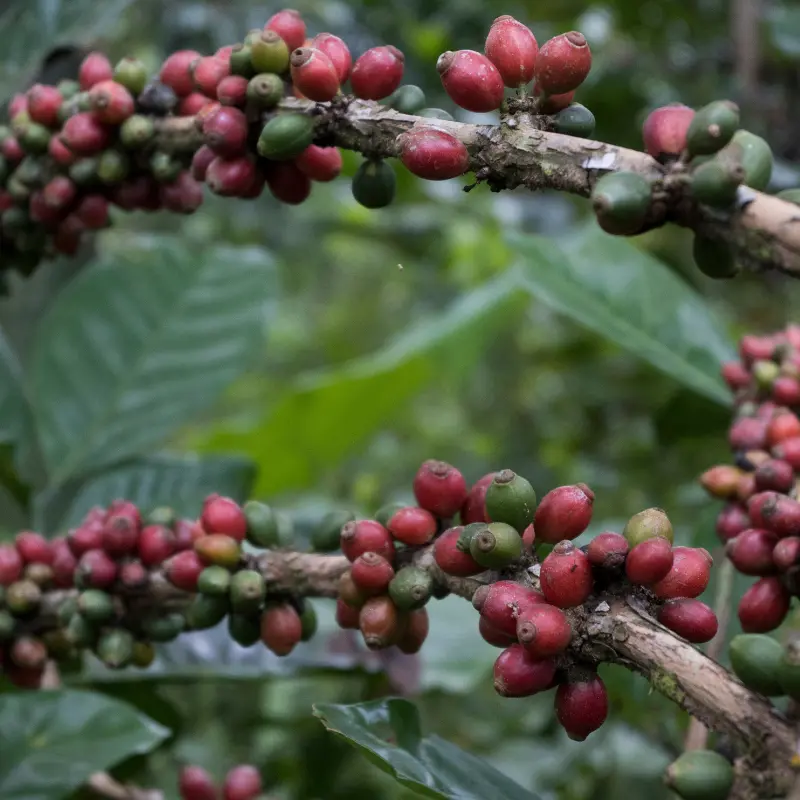
A unique blend of Liberica coffee beans in a 200g pack, Hang Tuah Malaysian Coffee offers a satisfying caffeine experience.
Pros:
- Offers a unique blend of Liberica coffee beans
- Comes in a convenient 200g pack
- Provides a satisfying caffeine experience
Royal Malaysia Liberica Coffee
⭐ 4/5 • 💰 ~$37
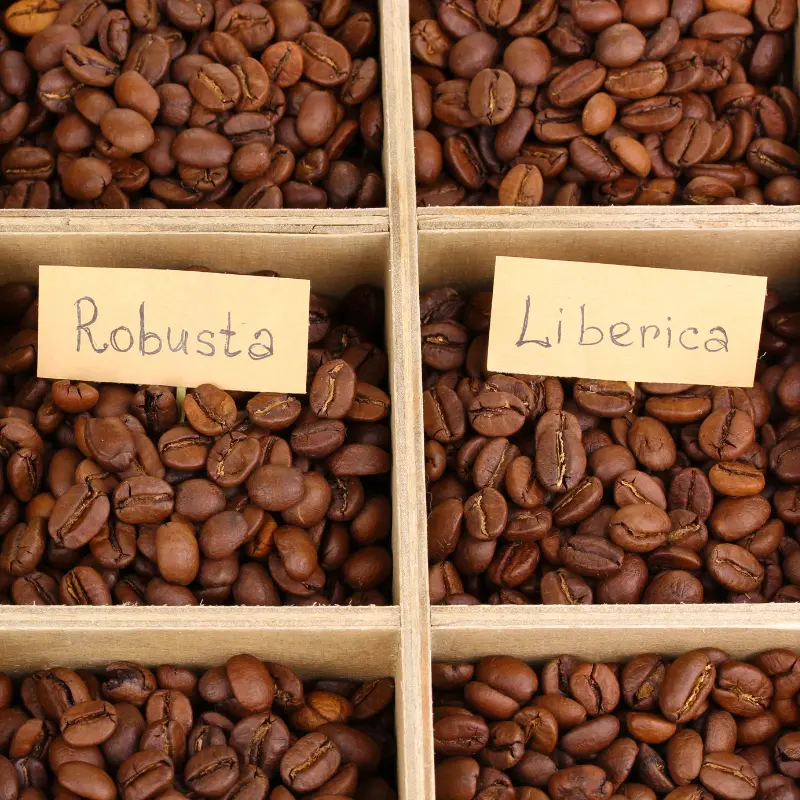
Rare, intensely bodied Liberica coffee in a beautiful tall copper tin.
Pros:
- Unique flavor notes
- Exceptional aroma
- High quality packaging
- Versatile grind options
Malaysia Liberica Coffee
⭐ 4.6/5 • 💰 ~$70
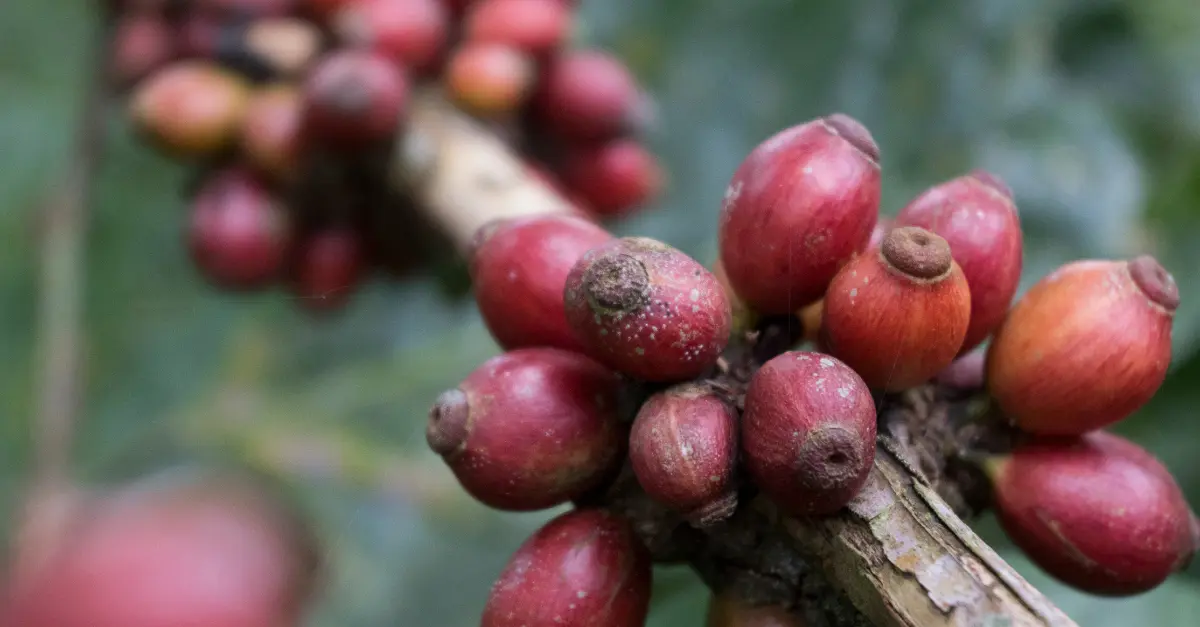
A rare, unique, and exceptionally aromatic Liberica coffee from Malaysia.
Pros:
- Rare species
- Available whole bean or ground
- Amazing aroma
- Notes of jackfruit and lychee
Malaysian Liberica Coffee Tin
⭐ 4/5 • 💰 ~$40
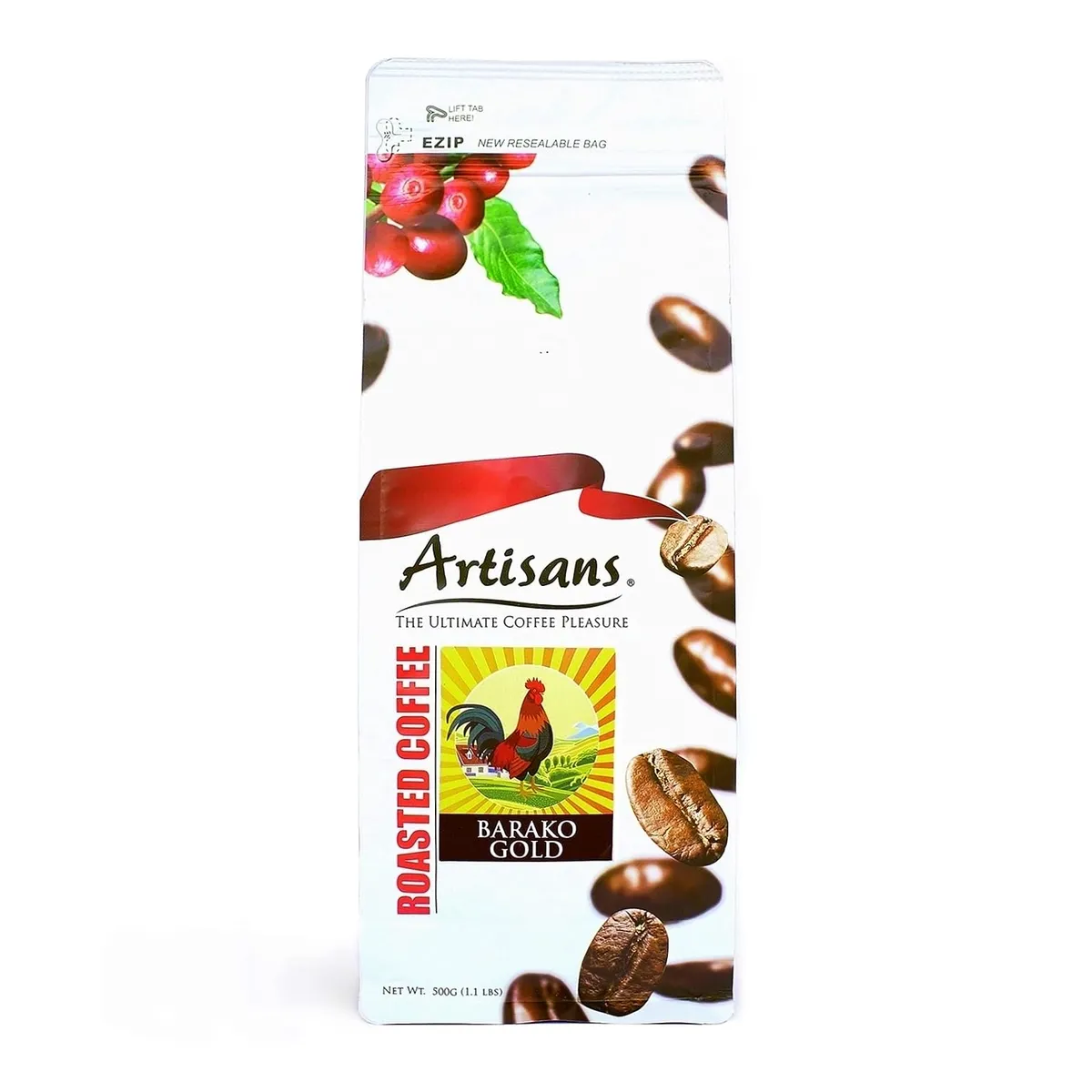
Rare Liberica coffee from Malaysia with unique flavor notes.
Pros:
- Unique flavor notes of jackfruit and lychee
- Intense body
- Incredible aroma
My Liberica Classic Coffee Bean
⭐ 4/5 • 💰 ~$54
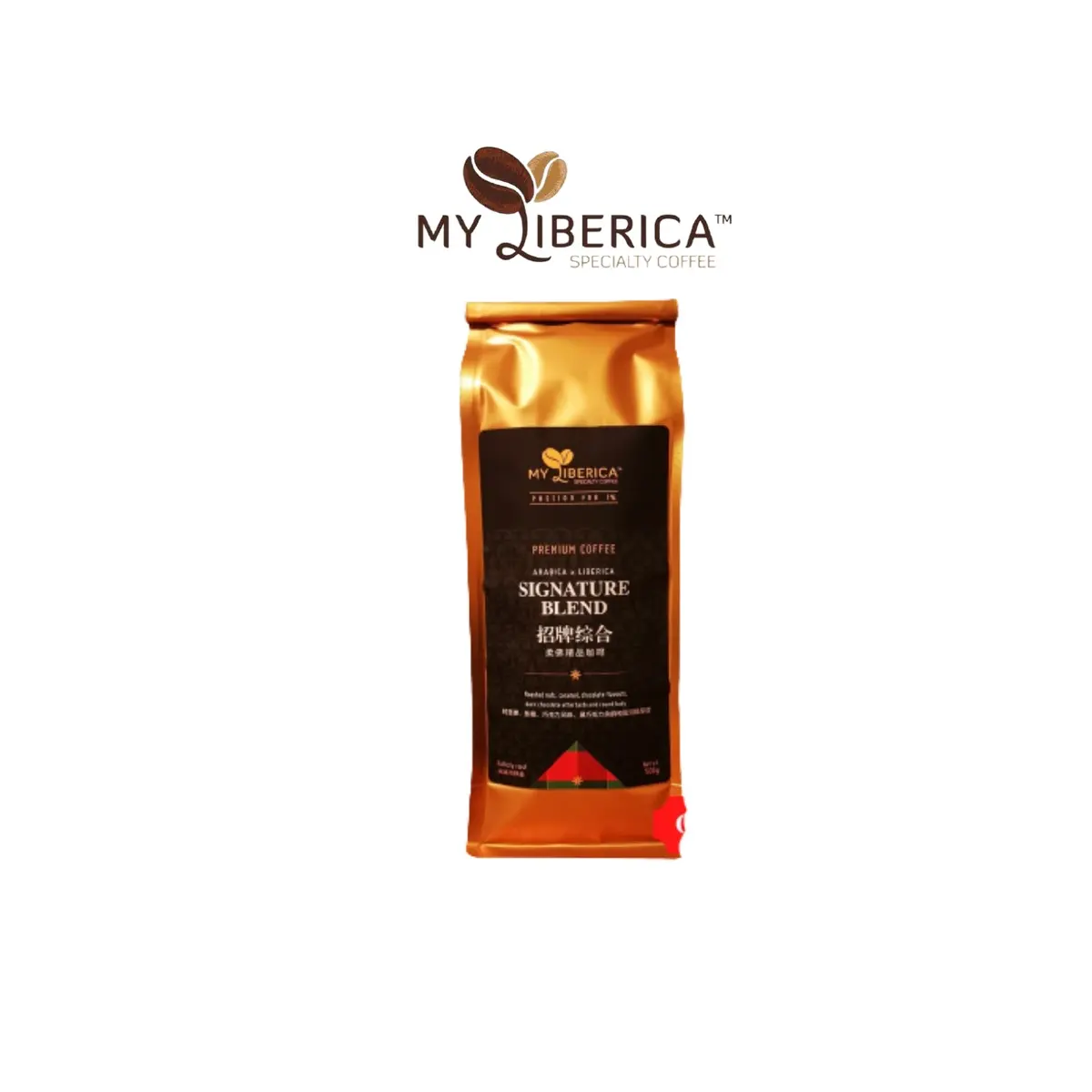
My Liberica Classic Coffee Bean is an Italian roast with a unique taste produced in Malaysia.
Pros:
- Distinct taste of roasted almond, caramel, and dark chocolate.
- Velvety body of the coffee enhances the drinking experience.
- Unique long charcoal aftertaste.
- Comes in a sizable 500g pack.
The Basics of Liberica Coffee
Scientifically known as Coffea Liberica, liberica coffee originates from the West African country of Liberia. The first liberica coffee plant was discovered in the wild during the late 18th century. However, its commercial cultivation spread rapidly beyond West Africa well into Asia through the 18th and 19th centuries.
Today, liberica coffee grows in west, east, and central Africa along with Asia, in countries like India, Indonesia, Malaysia, and the Philippines. But, liberica coffee doesn’t enjoy such a generous coffee market share globally, as Arabica coffee (70%) or Robusta coffee (30-40%). Instead, liberica coffee accounts for only 1.5% of the total global coffee market, explaining its less popularity.
Fun Fact: The Philippines account for over 70% of the global liberica coffee production and consumption today.
It is believed that liberica coffee spread to Asia quickly and prominently due to its special environmental characteristics. Compared to varieties like Robusta and Arabica, liberica coffee is strongly resilient to diseases (such as leaf rust) and pests (due to the liberica beans.
Additionally, its tolerance to humid and hot conditions, higher temperatures, and low altitudes extend the variety’s growing area. Among other reasons for liberica to be more tolerant are its deep roots. Their deep roots penetrate various soil conditions, allowing them to extract more nutrients and grow in a wider variety of conditions, compared to Arabica or robusta.
Liberica coffee grows as a shrub or tree, extending to about 66 feet tall. This is considerably taller than Arabica and robusta coffee shrubs, which average around 33 to 40 feet tall. The significantly taller tree sometimes requires producers to use ladders during harvest.
Similarly, the liberica tree grows equally larger leaves and cherries. The trees feature large and leathery foliage with elliptical and leaves with a wrinkled texture. During the flowering season, they produce tubular and star-shaped white blossoms that grow in clusters near the branch tips.
Like most coffee varieties, liberica coffee trees develop from little seedlings to full trees in 5 years. Further, they produce the coffee crop for about 5 to 50 years. But, they are at their peak with optimal crop production for the first 30 years.
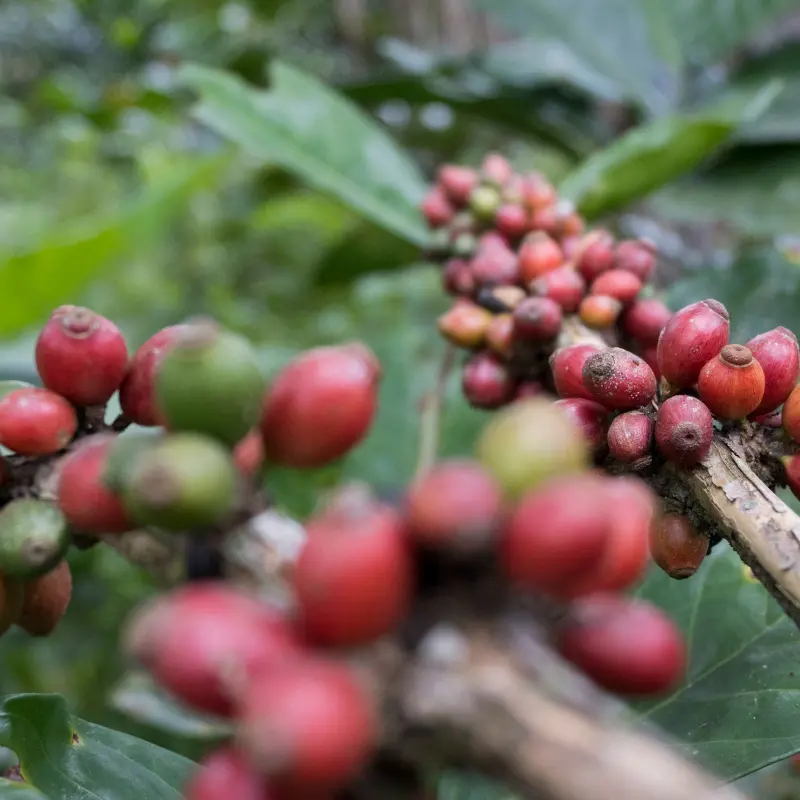
Liberica Coffee Consumption and Growth Today
Accounting for just 1.5% of the total global production, liberica has been commonly used as a commodity for instant coffee. It is usually mixed with robusta coffee to create soluble instant coffee. In fact, it has even been used by giant food manufacturers, such as Nestle for their instant coffee.
But, with growing popularity, liberica coffee is slowly earning its place in the coffee industry, well beyond being just an ingredient for instant coffee. In some Asian countries, producers are pushing for more liberica coffee consumption as a more budget-friendly alternative to higher cost and imported Arabica and robusta.
Growing liberica coffee as specialty coffee is a great way to elevate its popularity and status among coffee consumers. However, this comes with a price. To produce liberica coffee that appeals to more drinkers, cross-planting to produce hybrids may be essential.
After all, to boost the likelihood of the coffee scoring the 80 to 100 specialty coffee qualifying points, it is best to grow it at higher altitudes with more care and attention. This comes with the price of pure liberica trees becoming even more rare and ultimately, extinct.
So, while we enjoy more specialty liberica cultivars, we will miss out on experiencing its authentic flavors. Further, other producers can also explore other avenues to extract the best flavors from the beans, including processing.
Today, many experts participate in conservation efforts for liberica trees, particularly in Asia, to reduce their risks of extinction. In Asia alone, many farms have started to replace pure wild liberica coffee trees with shorter and more convenient hybrid cultivars. Even less effort is done to produce, promote, or improve liberica coffee production in Africa!
It’s important to note that in addition to its unique flavors, pure liberica coffee is also a sustainable crop, apart from its lower yield. Its resistance to diseases, pests, and extreme climates, makes it a great crop option. Plus, in its pure form, farmers can diversify what they grow and boost their earnings while producing organic and sustainable coffee.
Due to its survival at lower elevations, liberica can even be grown among fruit trees and legumes, taking advantage of the companionship this combination offers. For instance, legumes, such as beans or nuts fix oxygen in the soil to boost nutrient availability.
In addition to these safer, sustainable, and “cleaner” growing practices, liberica coffee can help farmers reduce the impact of climate change. Since liberica coffee survives better at lower elevations (therefore, a wide area), they can complement the affected Arabica coffee which sees its ideal land deemed unusable each day.
